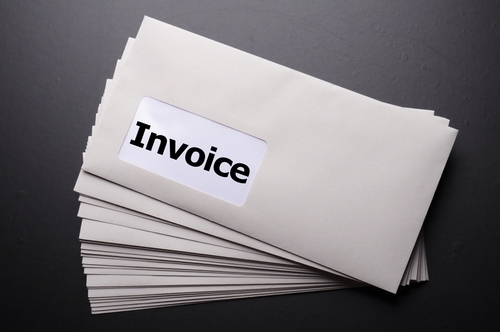Invoicing for small businesses can be a total nightmare. A smooth cash flow is essential for any business to prosper, and as such, should be top priority.
Sometimes clients don’t pay on time. In fact, according to BACS, the average wait for payment is currently around 38 days, or eight working weeks! More problematic, however, is the reality that some clients don’t pay at all.
Unfortunately, this is all part and parcel of business. However, one way to dispel the likelihood of being left at the mercy of clients is to implement a payment policy, taking into consideration:
- What methods of payment are accepted
- Whether a down payment is required
- Whether penalties will be applied to late payment
- Whether the piece of work will be completed without payment
To keep cash flowing into the business at a steady pace, try to ensure you invoice for completed jobs regularly. That might mean setting aside time every week to do this, or making a habit of doing it straight after each job is completed.
Invoices should always include a payment due date, so there’s no confusion over when the money is due into your account. Likewise, time should be set aside at least once a week to check for late payments and chase these up.
Invoicing software and apps are really effective tools for keeping track of cash flow. There are a number of cloud-based apps appearing on the market to facilitate invoice management, including Freshbooks, Harvest and Invoice2Go amongst others.
Sometimes, one of the hardest things for small businesses to determine is how much to charge clients for a given product or service. Obviously, by the time it comes to invoicing this will have already been determined, but to eliminate any confusion, make sure all charges are clearly outlined on the invoice.
Keeping a record
Make sure once you’ve invoiced that you’ve kept a clear record of what’s been invoiced, when, who the documentation has been sent to, and if it’s been chased, who with, what was said, and when. That way you’ll always be able to track exactly where the payment is and when it’s due, and eliminate the risk of over-chasing clients.
Financing options
Clients don’t always pay on time, and according to recent research, unpaid invoices are the leading cause of cash flow shortages among SMES. In fact, 24 per cent of businesses report issues relating to late payment.
Cash flow shortages can be extremely damaging to SMEs, and puts them at the complete mercy of their clients. To eliminate the risk, businesses can implement a process called invoice financing, by which a bank or lender provides money against unpaid invoices, giving quick and easy access to the funds they need to keep cash flow steady.





